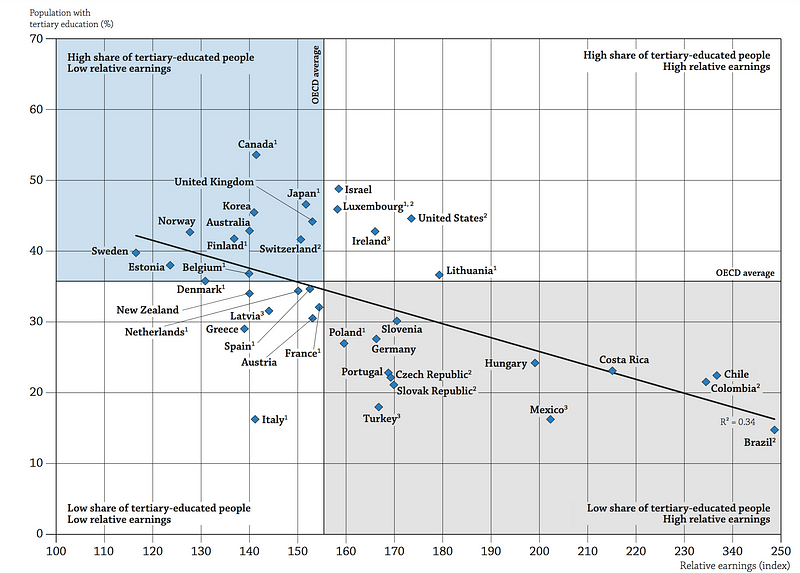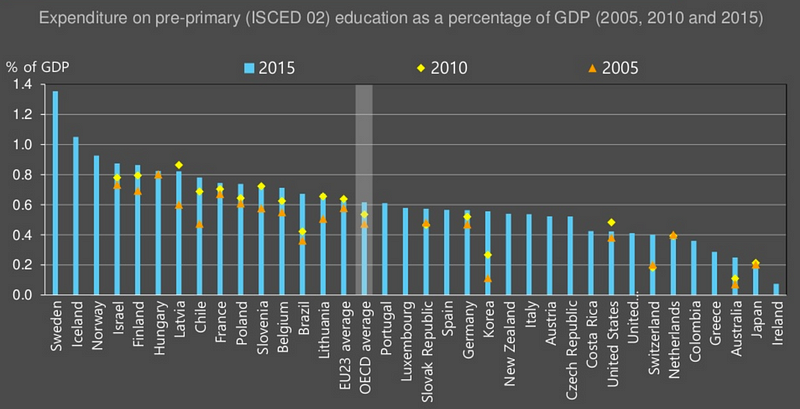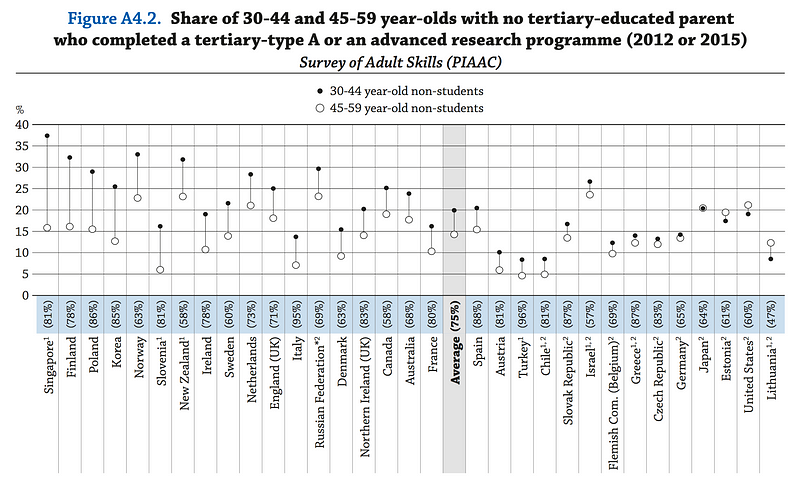Education, Education, Education

Education, Education, Education
One of the best investments that any economy can make is in education. It is a force which can transform the lives of individuals and communities in so many ways. And an investment in education within our schools, colleges, and universities often pays back many more times in creating a skilled workforce of the future, and in economic development. A lack of investment at any level can lead to significant problems in the future.
And so those countries who invest in education are likely to be the leaders of the future. These are also likely to create and develop the new ideas that will drive our economies and where economic growth is key to supporting all the other things that we take for granted. So if we want to improve the general health and well-being of a population, we don’t just invest in hospitals, but invest in education and in providing jobs where people feel that they are achieving their full potential.
At the core of our economy much be education. And it is education that is not just formal education but involves continual education within professionals, and where learning opens up new doors. There is nothing to spot a legal professional becoming the new great data scientist, and vice-versa.
As a starting point this graphic illustrates that those countries with the most highly educated populations are those with the high relative incomes (based on OECD stats):

My own city — Edinburgh — prides itself in its educated population (with more than 50% having a degree qualification), and it is one of the key generators for attracting businesses to the city. If they come, they know they can find an educated workforce who will want to stay and call the place their home. And so education bring wealth.
The formal levels defined by the International Standard Classification of Education (ISCED) are:
- Level 0 — Pre-primary education.
- Level 1 — Primary education or first stage of basic education.
- Level 2 — Lower secondary or second stage of basic education.
- Level 3 — (Upper) secondary education.
- Level 4 — Post-secondary non-tertiary education.
- Level 5 — First stage of tertiary education.
- Level 6 — Second stage of tertiary education.
In the following we will analyse based on:
- Tertiary education. This includes short-cycle tertiary, bachelor’s, master’s, doctoral or equivalent degrees.
- Upper secondary education (Level 3). This is the stage before tertiary education.
- Lower secondary education (Level 2). This is the final phase of basic education (junior secondary education).
Investment in education
According to the OECD [report], For investment in education, it is South Korea, Canada and Japan who invest most in the education system, with levels of over 60% for 25–34% having a tertiary education:

The importance that countries place on the education can often be measured in terms of the relative spend compared with GDP, and here we see that many of the most successful economies in the world have the highest levels of relative spending:

And an investment in the early years of school will, hopefully, pay back in the future decades. For this it can be seen that it is Scandinavian countries who are making an investment at the earliest years (and also helping to support parents in the work force):

Unfortunately, in some countries (such as Scotland), our teachers often spend too much of their time teaching (and not preparing for classes):

Investment in STEM
Over the past decade, South Korea has invested heavily in education at all levels. But the major difference in South Korea is that they have invested with STEM subjects:

Our modern economies, though, will require increasing numbers of STEM graduates, and it is in countries such as Germany and Austria who have the highest focus on these areas:

When it comes to employment levels, it is STEM-related subjects which often produce the highest areas of employment, with Arts and Humanities, social sciences, journalism and information with the lowest (education as a field of study often sites in between these):

Bridging the gap
The countries which show a changing demographic are the ones where younger graduates are sourced from families which do not have others in their family who do not have any tertiary-educated parents:

It can be seen that in Singapore, Poland, Finland and in South Korea that there are large changes in the demographic of learners, and where learners are coming through from families who do not have strong levels of traditional educational backgrounds. These countries show a long-term commitment to address some of the barriers to education.
Having at least one person in a family with a tertiary qualification is the greatest indicator of a person going onto an advanced level of learning:

Along with this the employment rate for 25–34 year-olds tends to be related to their educational attainment, where, for example, in Lithuania, the employment rate for those with a tertiary education is over 90%, but this drops to less than 60% for those with below upper secondary education:

In many countries, those with a tertiary education have relatively low levels of unemployment, and countries such as South Africa and the Slovak Republic show large variations between the unemployment levels of those who have a tertiary education and those who do not (in the UK is less than 5% against over 15%):

For income, those with tertiary education will often earn considerably more than those without it:

In the UK, for example, those with a tertiary education will earn on average 50% more than those with upper secondary education, and who will earn 25% more than those with a below upper secondary education.
And when it comes to health and well-being, education is one of the best investments that a country can make. Here we see in Ireland that there are nearly three times as many adults with depression between those with a lower upper secondary education and those with a tertiary education (and which is similar to the UK and Germany):

The gulf in levels of depression and educational attainment levels is, on average, much greater in women than with men:

Quality of life and educational attainment
But what makes a great quality of life? Well the measures of the future of our countries will focus on these areas:

Again we see a strong linkage between educational attainment within countries and personal safety:

Conclusion
Education improves health and well-being. It contributes to our societies, our communities, and to our place in the world. It builds bridges between people across the world. It opens up new viewpoints. It allows others to understand the how others in the world feel and the challenges they face. Whether it learning about how a transistor worlds or fixing a broken bone, every single piece of education makes our world better.
You feel more confident. You take more ownership of your life. Go and continue your education, and support others — your colleagues, your family, your kids — to get into education. Don’t get stuck in your own little world, and push yourself to learn new things, and question things.
Our future economies will be built on education, and those cities and countries who support it most, will be the ones who will thrive.
In my own country, I want to see those from the most deprived areas of Scotland being given the opportunity to have as much opportunity to education as anyone else, and to become our future business leaders, scientists and engineers. The most precious assets that we have in our countries are those who are sitting in our classrooms now, and it is upon them that our future world will depend.